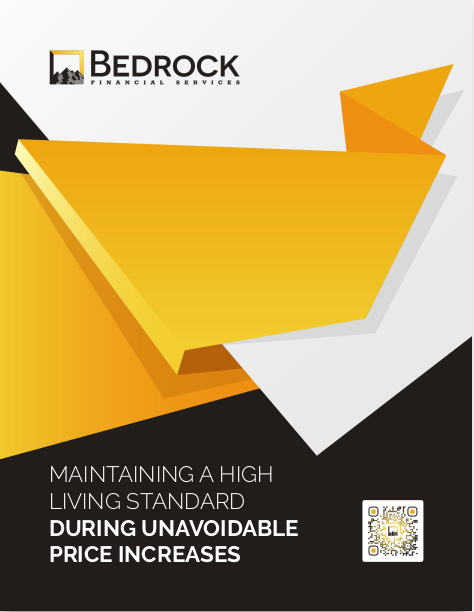Key Takeaways
-
Clients delay or avoid buying insurance when they don’t fully grasp how it works or how it protects them.
-
Simplifying your language, using visuals, and slowing down the presentation can close more sales than any pitch.
Insurance Isn’t Complicated—Until We Make It That Way
Insurance is a tool to protect wealth, security, and peace of mind. But for many of your clients, it feels like a maze of terms, timelines, and tradeoffs. As a licensed insurance agent, you know the value of what you’re offering. But if you explain it in a way they can’t follow, they won’t see it.
What does that mean in 2025? It means revisiting the way you talk, draw, and explain policies. It means building trust by making the unfamiliar feel easy.
The Communication Gap Is Your Real Obstacle
Clients aren’t saying no because they don’t want protection. They’re saying no because something you said triggered confusion. It may have been:
-
Too much detail too early
-
Assumptions about what they already know
-
Jargon that sounds like another language
-
A pitch instead of a conversation
You’re not just selling a product. You’re selling clarity, confidence, and peace of mind. If any one of those is missing, the sale doesn’t happen.
Start With What They Already Understand
Begin every conversation with something familiar. Most clients understand:
-
Paying monthly for a benefit
-
Setting something up “just in case”
-
Wanting to protect family, income, or assets
From there, build the conversation layer by layer. Don’t lead with policy types or acronyms. Lead with the purpose: “What do you want to make sure always happens, no matter what?”
Let their answers guide the structure of your explanation.
Build Understanding With Visuals
People process images 60,000 times faster than text. In 2025, this isn’t just a statistic—it’s a strategy.
Use charts, diagrams, timelines, and comparison visuals that show the difference between choices. The best visuals:
-
Map a timeline from today to retirement or another life event
-
Show costs and benefits side-by-side
-
Use simple shapes and color coding
Avoid overdesigned infographics. Keep it clean, focused, and interactive if possible. A single visual can anchor the entire appointment.
Don’t Just Say the Words—Define Them
When you say “rider,” “beneficiary,” or “term length,” pause. Ask: “Do you want me to define that or skip ahead?”
Clients appreciate the check-in. It gives them permission to say, “Actually, I don’t know what that means.”
Better yet, simplify before they even ask:
-
“A beneficiary is the person who would receive the payout.”
-
“A rider is like an add-on for your policy.”
When you lead with clarity, you reduce the number of objections later.
Timeframes Make the Abstract Real
A policy that lasts 30 years sounds like forever—until you tie it to life stages:
-
“This covers you until your youngest finishes college.”
-
“This carries you into retirement when your mortgage is likely paid off.”
Clients buy stories. Frame coverage around moments they can picture. In 2025, clients want relevance. Don’t just talk about protection—tie it to their reality.
The Power of Slowing Down
One of the easiest ways to help a client understand is to slow down.
-
Give them room to think.
-
Ask reflective questions.
-
Use short sentences and pauses.
If you sense they’re nodding but not absorbing, pull back. Ask: “Should I pause here?” or “What’s making sense so far?”
Speed feels like pressure. And pressure blocks learning. If you slow the pace, you increase clarity.
Avoid the Numbers Dump
Yes, clients need to see costs and options. But early in the conversation, numbers can overwhelm.
Instead of listing premiums, use ranges and explain what influences them:
-
“You’ll see a higher cost if you want lifetime coverage.”
-
“Shorter terms tend to be more affordable month to month.”
Frame the numbers around tradeoffs and goals, not spreadsheets.
Give Them Language They Can Repeat
If your client can’t explain the policy to their spouse or friend in one sentence, they don’t understand it yet.
At the end of your appointment, ask:
-
“If someone asked you what you just signed up for, what would you say?”
If their answer is off, clarify it in their words:
-
“That’s close. Another way to say it could be: It’s a 20-year policy that pays $250,000 if I pass away.”
When clients can say it simply, they believe it clearly.
Ask More Than You Tell
Clients don’t need a lecture. They need a dialogue.
Instead of:
-
“This policy is best for you.”
Try:
-
“How do you feel about something that locks in your rate for 20 years?”
-
“Would you prefer to pay more monthly and keep the coverage for life, or pay less now and revisit later?”
Every question makes your client the decision-maker. That leads to deeper understanding and stronger ownership.
Highlight What Happens Next
Clients often worry about what happens after they say yes. Remove that uncertainty. Walk them through the post-signing process:
-
Application steps
-
Possible medical review timeline (if any)
-
When their policy becomes active
Give dates. Give durations. Example: “Once approved, your policy can go into effect in about 3 weeks.”
Understanding doesn’t stop at the sale. It must carry through the onboarding.
Reinforce With Follow-Up
Even when a client understands during the meeting, they may forget key details.
Use 2025 tools like:
-
Short explainer videos in your email follow-up
-
Summary infographics of their policy type
-
A one-pager of “what you chose and why”
When you make it easy to remember, you make it easy to feel confident.
Watch for Signs of Confusion
Not every client will say they’re confused. Learn to spot the subtle cues:
-
Nodding too quickly
-
Delayed or no questions
-
Changing the topic
-
Saying “let me think about it” without a specific concern
When you see this, gently revisit the key concept. Use another example. Draw it. Reword it.
Their hesitation may not be about the product. It might be about understanding.
Simplification Sells More Than Persuasion
In 2025, the agents winning the most business are not the smoothest talkers. They’re the clearest communicators.
Clients trust what they understand. They refer what they understand. And they stick with what they understand.
Use this checklist for every sales conversation:
-
Did I explain using their words, not mine?
-
Did I use a visual?
-
Did I give them one sentence they can repeat?
-
Did I pause and let them reflect?
-
Did I confirm they understood before moving forward?
You don’t need better products. You need a better bridge between what you know and what your clients can absorb.
It All Starts With How You Explain It
If clients don’t understand the value of what you’re offering, they won’t buy it. And if they don’t understand what they bought, they won’t keep it.
That’s why we’re here. At Bedrock Financial Services, we help independent agents like you build trust faster, present clearly, and close confidently. Our tools, training, and visual resources help you communicate in a way clients remember.
Sign up with us today—because the best sale you can make is the one a client fully understands.







